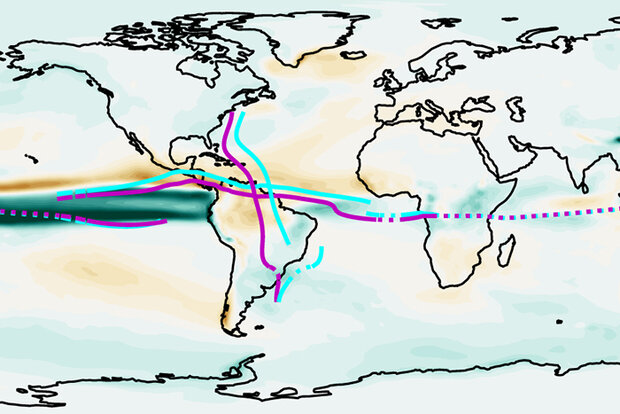Using energy-driven models to predict tropical rainfall

Projected precipitation anomalies for the late twenty-first century. Positive anomalies are teal; negative anomalies are brown. Credit: doi:10.1088/2752-5295/acb9b0

Projected precipitation anomalies for the late twenty-first century. Positive anomalies are teal; negative anomalies are brown. Credit: doi:10.1088/2752-5295/acb9b0
Small shifts in tropical precipitation patterns can mean the difference between drought or excess rainfall in certain regions, and can alter larger atmospheric patterns. As Earth’s climate continues to evolve in a changing climate, it is of great societal importance to understand the causes and effects of changing tropical precipitation. Several important questions have yet to be fully characterized by the research community, including how remote climate and weather can influence tropical patterns, and how transported energy is linked to these atmospheric and ocean systems. A new study, funded by the Climate Program Office’s Climate Variability & Predictability (CVP) Program, uses a two-dimensional model to evaluate the role of atmospheric energy fluxes in observed and predicted tropical rainfall shifts from 2000 to 2100.